Sky Hunters: What Foods Do Hawks Eat?
Updated: Jan. 29, 2024
Learn the answer to what do hawks eat. Plus find out which hawks are most likely hunting the songbirds at your backyard feeders.
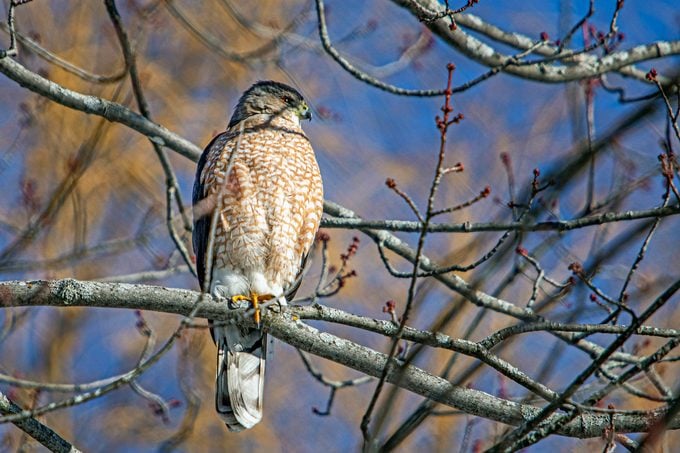
Hawks are some of the most common raptors, but what foods do hawks eat, exactly? The answer is as varied as hawks themselves. Hawks eat a variety of things, with the details depending on which kind they are. But their diet ranges from insects to songbirds and small mammals.
Meet 9 types of hawks you should know.
What Do Red-Shouldered Hawks Eat?
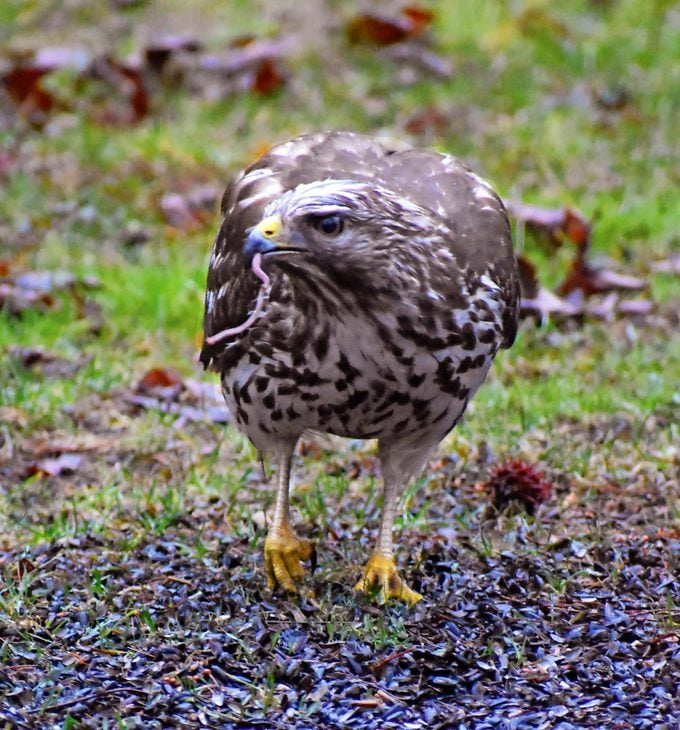
In the East, red-shouldered hawks live mostly in forests or in suburbs and towns with a lot of trees. They hunt for rodents, frogs, crayfish, grasshoppers and other small prey. Earthworms are sometimes on the menu and they may serve as easy pickings for young red-shoulders that haven’t learned to hunt more agile prey.
Psst—use these essential hawk identification tips for birders.
What Do Rough-Legged Hawks Eat?
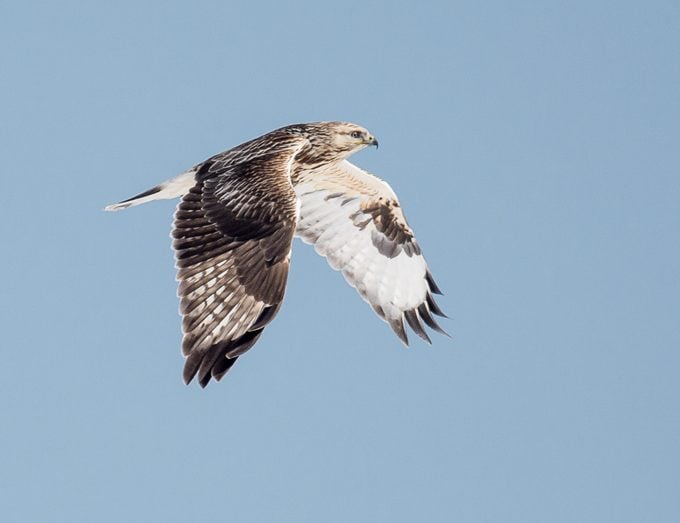
The rough-legged hawk is the buteo of winter for most people. These raptors breed along cliffs in the high Arctic and winter all across the United States—except for parts of the Southeast—and southern Canada. Visit one of the must-see hawk migration hotspots to see them. You can often see them briefly hovering in place before plummeting down on unsuspecting rodent snacks, one of their favorite foods.
Check out fascinating facts about raptor migration.
What Do Cooper’s Hawks Eat?
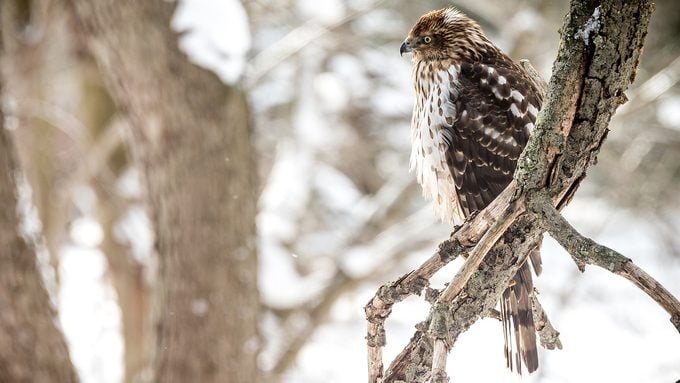
They may be frequent fliers at many backyard feeding stations across the continental United States, but Cooper’s hawks aren’t drawn in by the seed buffet—they’re actually hunting the birds at your feeders. This species is a nimble, midsized accipiter. They specialize in snagging small birds directly out of the air after a surprise ambush. The red-eyed adults are blue-gray along the back with reddish barring on chest and belly, and yellow-eyed juvenile birds are heavily streaked.
ID challenge: Cooper’s hawk vs sharp shinned hawk.
How to Protect Songbirds from Hawks
“After a hawk appeared, my feeders have had fewer bird visitors. What should I do?” asks Tony Vance of York Haven, Pennsylvania.
It’s unsettling to think of your songbirds as prey, but remember that hawks, like the Cooper’s, are only trying to survive. Hawks are beautiful and interesting native birds, and their predation on songbirds is a normal part of nature. But we totally understand how hard it is to think of them going after your beloved backyard birds.
Having bird feeders close to a house, with large shrubs on either side, should help songbirds because it gives them a quick escape route. But it’s important not to have shrubbery too close, since it might allow an ambush by prowling house cats or other predators. About 5 or 6 feet away from the feeder is a good distance.
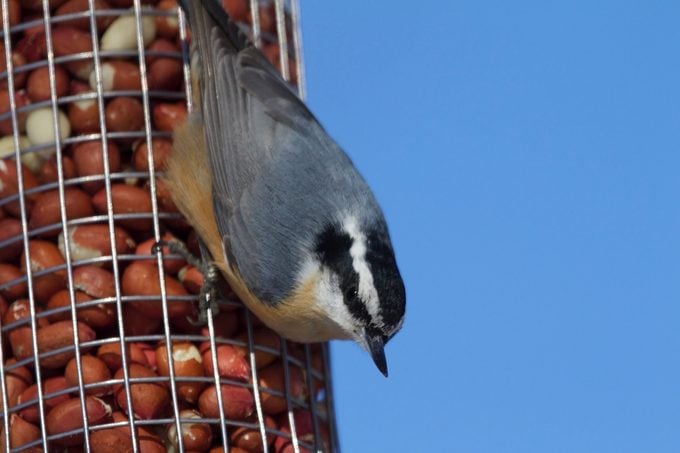
If a hawk has targeted your feeder for repeated visits, consider taking the feeder down for a few days until the hawk gets out of the habit. The hawk should move on to easier hunting grounds.
“Can you help us keep hawks away from our bird feeders?” asks Sheila Leppert of Morehead City, North Carolina.
We’re always conflicted when hawks show up near our bird feeders, stalking our favorite songbirds. But since hawks are native species, this is truly a part of nature. To level the playing—or flying—field, place feeders close to natural cover so songbirds can dive in when a hawk comes calling. Feeders surrounded by wire cages provide additional protection. If a visiting hawk becomes too problematic, you might need to take your feeders down for a few days until it moves on. Songbirds will go back to foraging naturally and return to your feeders once the coast is clear.
Discover 5 ways to create a bird-safe backyard.
Why Are Some Songbirds Unafraid of Hawks?
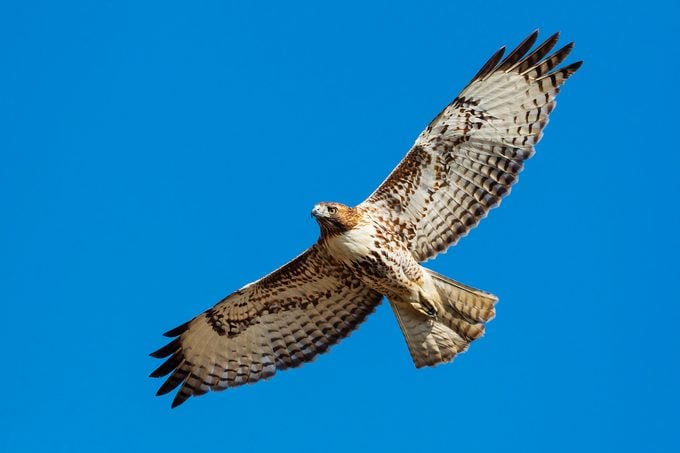
“A flock of songbirds in my yard seemed unbothered by a hawk. Do they feel safer in large numbers?” asks Barbara Godshall of Souderton, Pennsylvania.
Birds react to the presence of hawks in a variety of ways, and sometimes they do seem bolder when they’re in a large flock. Some crows will even chase hawks!
A lone bird may dive into cover, but a flock may simply keep an eye on the hawk and stay ready to flee if necessary. Their behavior also varies depending on what kind of hawk it is. Small birds won’t act so brave around a Cooper’s hawk or peregrine falcon, both of which are speedy raptors that often prey on birds, but they may tolerate a red-tailed hawk, which isn’t fast enough to capture most birds.
Next learn about lesser-known raptors and birds of prey.
